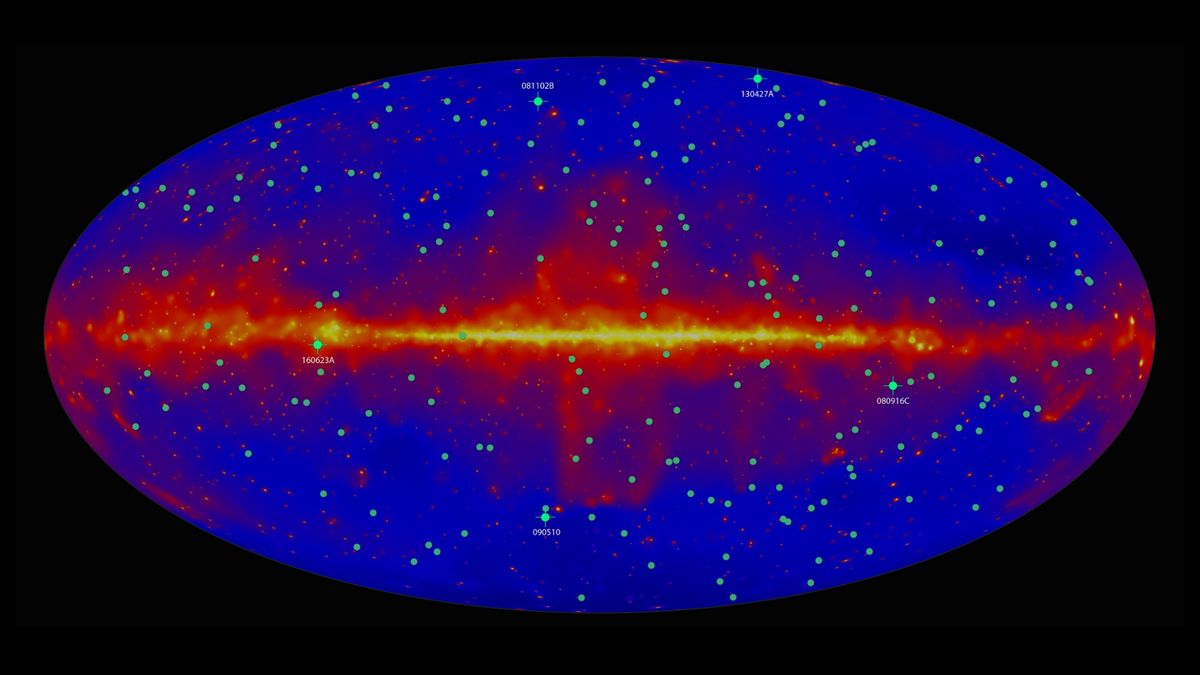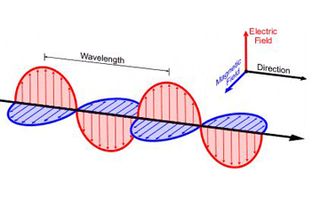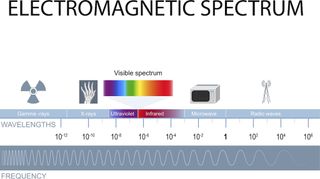What is electromagnetic radiation?
Electromagnetic radiation is a form of energy that includes radio waves, microwaves, X-rays and gamma rays, as well as visible light.

Electromagnetic radiation is a type of energy that is all around us and takes many forms, such as radio waves, microwaves, X-rays and gamma-rays. Sunlight is also a form of electromagnetic energy, but visible light is only a small portion of the electromagnetic spectrum, which contains a broad range of wavelengths.
When was electromagnetism discovered?

People have known about electricity and magnetism since ancient times, but the concepts were not well understood until the 19th century, according to a history from physicist Gary Bedrosian of the Rensselaer Polytechnic Institute in Troy, New York. In 1873, Scottish physicist James Clerk Maxwell showed that the two phenomena were connected and developed a unified theory of electromagnetism, according to Live Science sister site Space.com. The study of electromagnetism deals with how electrically charged particles interact with each other and with magnetic fields.
Maxwell developed a set of formulas, called Maxwell's equations, to describe the different interactions of electricity and magnetism. Though there were initially 20 equations, Maxwell later simplified them to just four basic ones. In simple terms, these four equations state the following:
- The force of attraction or repulsion between electric charges is inversely proportional to the square of the distance between them.
- Magnetic poles come in pairs that attract and repel each other, much as electric charges do.
- An electric current in a wire produces a magnetic field whose direction depends on the direction of the current.
- A moving electric field produces a magnetic field, and vice versa.
How is electromagnetism created?
Electromagnetic radiation is created when a charged atomic particle, such as an electron, is accelerated by an electric field, causing it to move. The movement produces oscillating electric and magnetic fields, which travel at right angles to each other, according to an online physics and astronomy course from PhysLink.com. The waves have certain characteristics, given as frequency, wavelength or energy.
A wavelength is the distance between two consecutive peaks of a wave, according to the University Corporation for Atmospheric Research (UCAR). This distance is given in meters or fractions thereof. Frequency is the number of waves that form in a given length of time. It is usually measured as the number of wave cycles per second, or hertz (Hz). A short wavelength means that the frequency will be higher because one cycle can pass in a shorter amount of time. Similarly, a longer wavelength has a lower frequency because each cycle takes longer to complete.
What are the parts of the electromagnetic spectrum?

Electromagnetic radiation spans an enormous range of wavelengths and frequencies. This range is known as the electromagnetic spectrum, according to UCAR. The electromagnetic spectrum is generally divided into seven regions, in order of decreasing wavelength and increasing energy and frequency. The common designations are radio waves, microwaves, infrared (IR), visible light, ultraviolet (UV) light, X-rays and gamma-rays.
Radio waves
Radio waves are at the lowest range of the electromagnetic spectrum, with frequencies of up to about 30 billion hertz, or 30 gigahertz (GHz), and wavelengths greater than about 0.4 inch (10 millimeters). Radio is used primarily for communications, including voice, data and entertainment media.
Microwaves

Microwaves fall in the range of the electromagnetic spectrum between radio and IR. They have frequencies from about 3 GHz to 30 trillion hertz, or 30 terahertz (THz), and wavelengths of about 0.004 to 0.4 inch (0.1 to 10 mm). Microwaves are used for high-bandwidth communications and radar, as well as for a heat source for microwave ovens and industrial applications.
Infrared
Infrared is in the range of the electromagnetic spectrum between microwaves and visible light. IR has frequencies from about 30 to 400 THz and wavelengths of about 0.00003 to 0.004 inch (740 nanometers to 100 micrometers). IR light is invisible to human eyes, but we can feel it as heat if the intensity is sufficient.
Visible light
Visible light is found in the middle of the electromagnetic spectrum, between IR and UV. It has frequencies of about 400 to 800 THz and wavelengths of about 0.000015 to 0.00003 inch (380 to 740 nanometers). More generally, visible light is defined as the wavelengths that are visible to most human eyes.
Ultraviolet
Ultraviolet light is the range of the electromagnetic spectrum between visible light and X-rays. It has frequencies of about 8 × 1014 to 3 x 1016 Hz and wavelengths of about 0.0000004 to 0.000015 inch (10 to 380 nanometers). UV light is a component of sunlight, but it is invisible to the human eye. It has numerous medical and industrial applications, but it can damage living tissue.
X-rays

X-rays are roughly classified into two types: soft X-rays and hard X-rays. Soft X-rays make up the range of the electromagnetic spectrum between UV and gamma-rays. Soft X-rays have frequencies of about 3 × 1016 to 1018 Hz and wavelengths of about 4 × 10−7 to 4 × 10−8 inch (100 picometers to 10 nanometers). Hard X-rays occupy the same region of the electromagnetic spectrum as gamma-rays. The only difference between them is their source: X-rays are produced by accelerating electrons, while gamma-rays are produced by atomic nuclei.
Gamma-rays
Gamma-rays are in the range of the spectrum above soft X-rays. Gamma-rays have frequencies greater than about 1018 Hz and wavelengths of less than 4 × 10−9 inch (100 picometers). Gamma radiation causes damage to living tissue, which makes it useful for killing cancer cells when applied in carefully measured doses to small regions. Uncontrolled exposure, though, is extremely dangerous to humans.
This article was updated on March 17, 2022, by Live Science contributor Adam Mann.
Additional resources
- Explore the electromagnetic spectrum further with this interactive page from NASA.
- Convert between wavelength and frequency and learn the size of different electromagnetic waves with this calculator from HyperPhysics, a website hosted by Georgia State University.
- Read James Clerk Maxwell's groundbreaking 1873 treatise on electricity and magnetism online.
Bibliography
Sutter, P. (2021, September 29). Who was James Clerk Maxwell? The greatest physicist you've probably never heard of. Space.com. https://www.space.com/who-was-james-clerk-maxwell-physicist
University Corporation for Atmospheric Research, Center for Science Education. (2017). Electromagnetic (EM) spectrum. https://scied.ucar.edu/learning-zone/atmosphere/electromagnetic-spectrum
University Corporation for Atmospheric Research, Center for Science Education. (2018). Wavelength. https://scied.ucar.edu/learning-zone/atmosphere/wavelength
Walorski, P. (n.d.). Why is that electrons radiate electromagnetic energy when they are accelerated? PhysLink.com. Retrieved March 17, 2022, from https://www.physlink.com/education/askexperts/ae436.cfm
Sign up for the Live Science daily newsletter now
Get the world’s most fascinating discoveries delivered straight to your inbox.

- Adam MannLive Science Contributor












